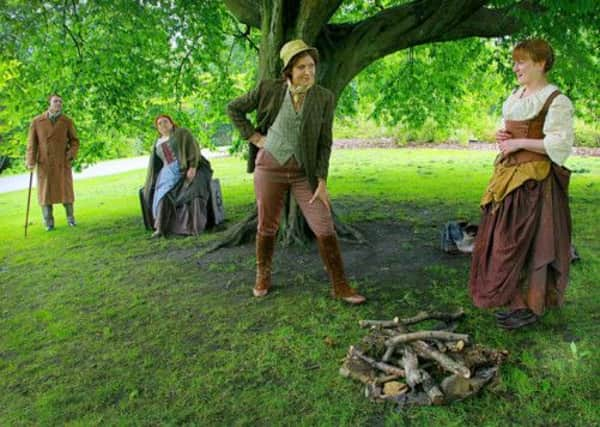Much ado about staging Shakespeare outdoors


Against all the odds, and with very little public subsidy, the Bard In The Botanics season has now been running in Glasgow for 12 years, staging three of four new Shakespeare productions every summer. Budgets are tight, and the weather often unkind; in last year’s disastrously wet summer, almost half of the performances were cancelled.
Yet there’s something about the idea of performing Shakespeare outdoors that continues to exert a strange appeal, despite all the hazards. The Bard In The Botanics is by far the biggest outdoor Shakespeare event in Scotland, but there are many others, both in Scotland and across the UK; so that over the years, I’ve seen the Bard put through his paces everywhere from Paxton House to St Andrews Castle, and the magical Holmwood House in Cathcart.
Advertisement
Hide AdYet ask the direct question about whether Shakespeare’s plays actually benefit from being performed outdoors, and the answer is a strangely mixed one; it’s tempting to say, in a broad brush-stroke, that the comedies do, and the tragedies don’t, but even that is not quite the whole story. The political tragedy of Julius Caesar, for example – presented this year by Bard In The Botanics in the Kibble Palace, the garden’s legendary Victorian plant-house – is clearly better off indoors. It not only demands a level of concentration and seriousness difficult to achieve in an outdoor environment full of whispering trees, chirping birds and roaring traffic on the Great Western Road; it also fits satisfyingly into the elegant classical lines of the building, as if both the palace and the play were involved in a dialogue about civilisation, and the kind of structures human beings strive to build. Yet I have seen some great outdoor productions of the tragedy of Macbeth, in which all the hazards of the weather seemed well worth risking, for the sheer thrill of seeing the power of Shakespeare’s most elemental tragedy reflected in the setting as well as in the language. And I have seen comedies – like this year’s Much Ado – which gain or lose little, either way, from being staged outdoors.
In the core of Shakespeare’s repertoire, though, there seem to be just a handful of plays – particularly the great early “pastoral” comedies, A Midsummer Night’s Dream and As You Like It – which are partly about the power of nature itself; the lushness and mystery of the forest that unleashes sexual mayhem among the four young lovers in A Midsummer’s Night’s Dream, or the Forest of Arden in As You Like It, which represents a world of natural political virtue and honesty, set against the authoritarian cruelty of the court.
In these plays, the outdoor setting seems to echo something in the very texture of Shakespeare’s writing, not only in the direct references to plants and trees – “I know a bank where the wild thyme blows” – but in a deep, pulsing natural energy, a life-force that drives the characters relentlessly and joyfully towards the inevitable couplings of the final scene. And although there are no rules in the staging of Shakespeare, I suspect that it’s the strange magic that can be created by outdoor productions of these elemental plays that accounts for the sheer persistence and allure of the idea of outdoor Shakespeare. They were first written, after all, for a theatre without a roof. And although Scotland has no Shakespeare’s Globe – or not yet – there are moments when a performance open to the power of nature seems to strike some deep chord in Shakespeare’s writing; one not so easy to recapture, within the walls of a warm, safe theatre building.